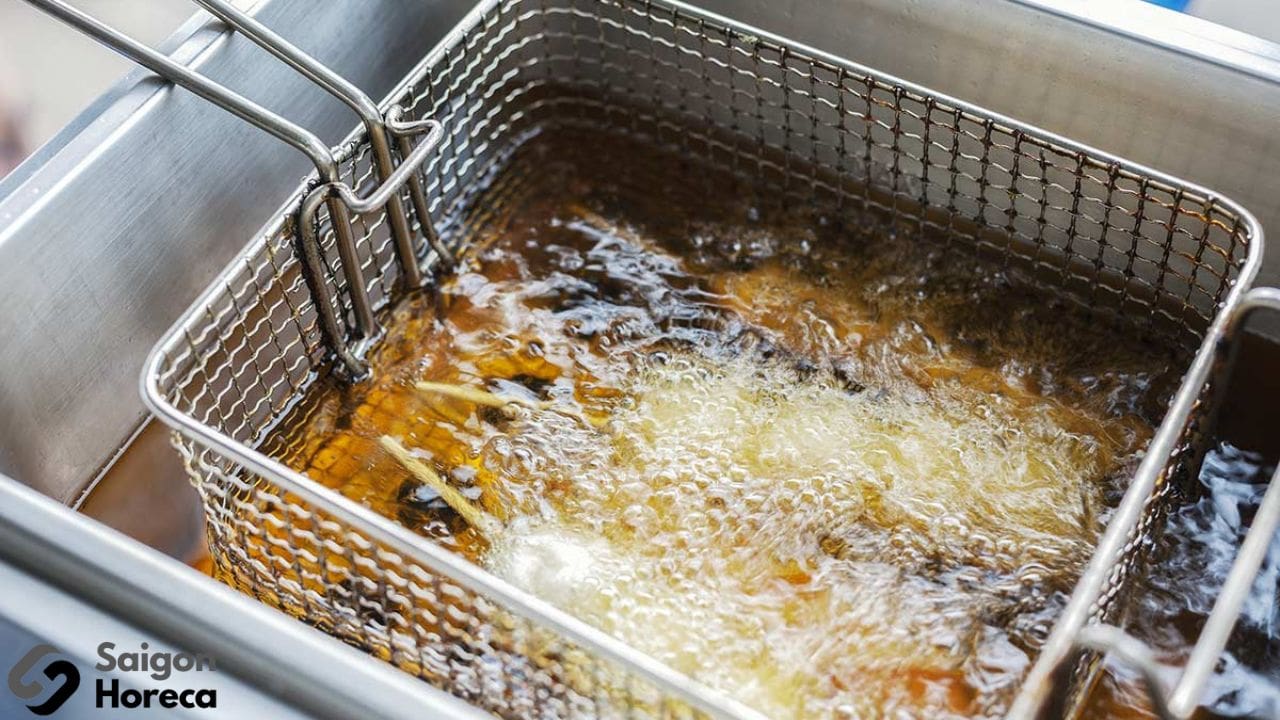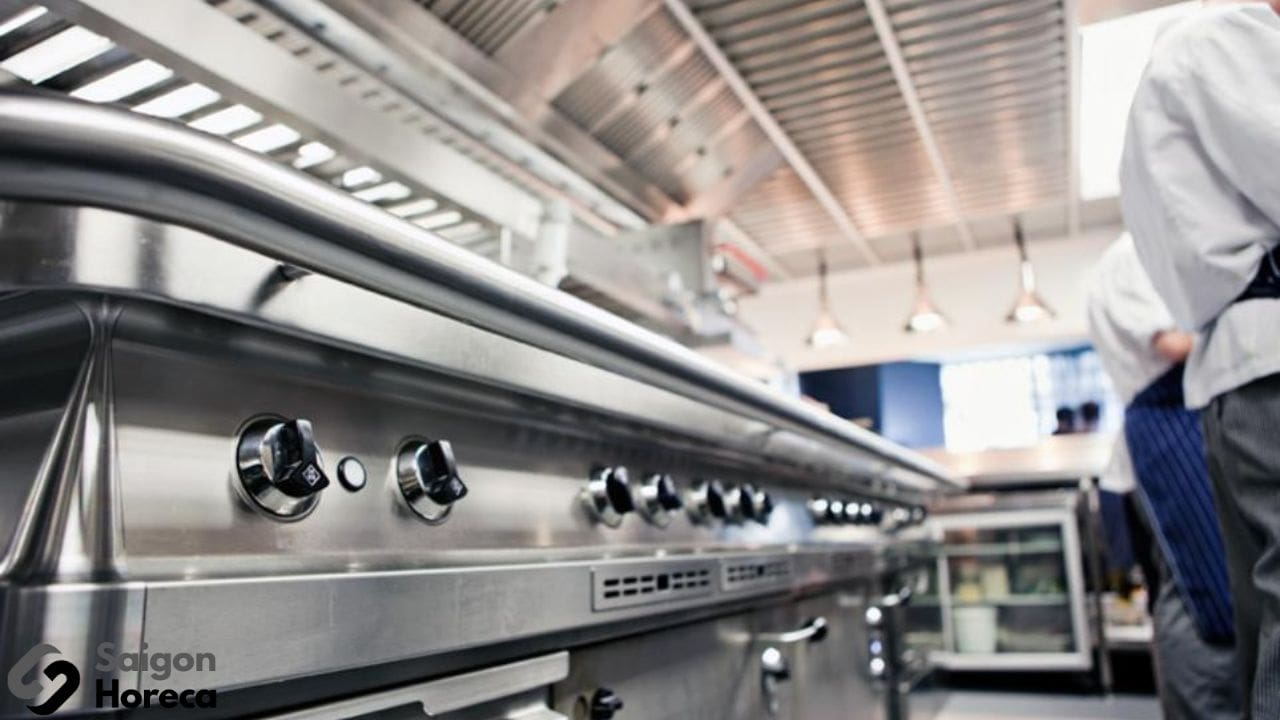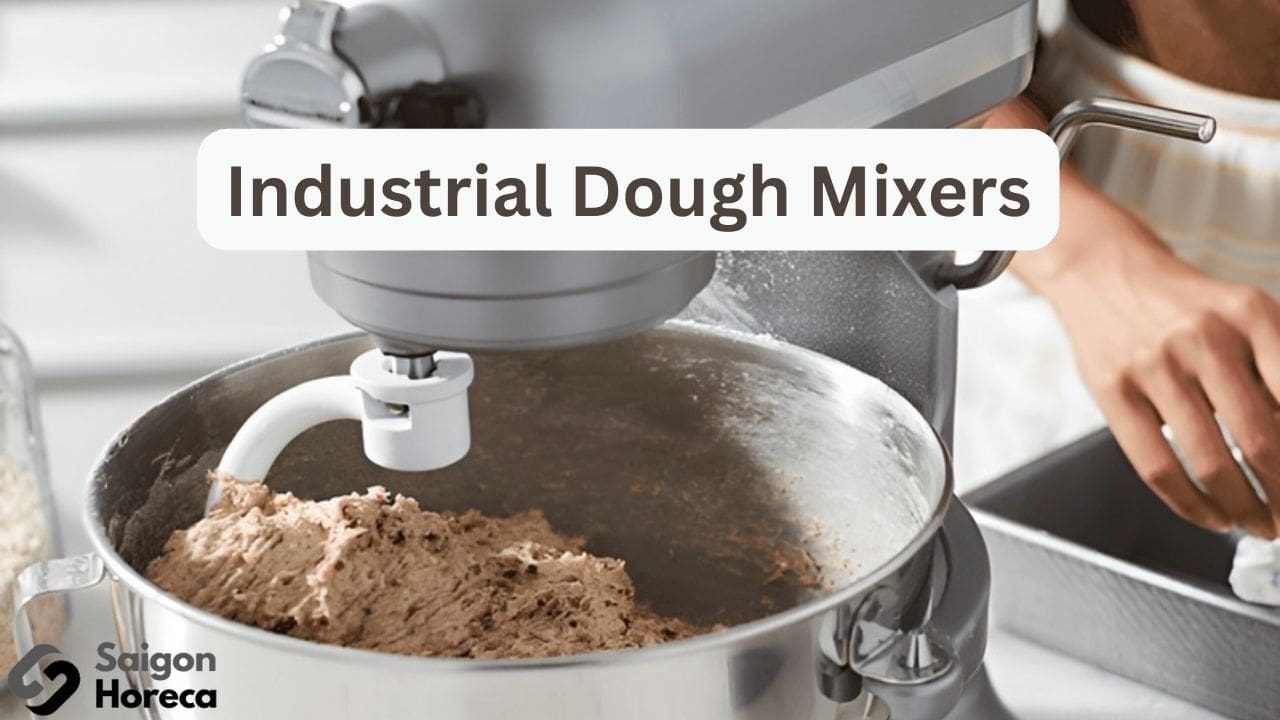Commercial European Kitchens or European Kitchens in Restaurants are essential elements for preparing European cuisine in specialized European restaurants. While […]
Read More
- Industrial Kitchen Equipment
Deep Fryer: The Perfect Choice for Deliciousness – Gas or Electric?
- November 9, 2023
Deep fryer, also known by various names such as immersion fryer, deep fryer oven, deep frying pan, is an indispensable appliance in the kitchens of restaurants, eateries, or even in household kitchens. Not only does it create delicious and crispy dishes, but the deep fryer also operates quickly and efficiently, ensuring that the food is prepared properly without losing its flavor and quality.
However, when faced with the decision to choose a equipment for yourself, you may encounter the important question: should you use a gas or electric deep fryer? Each type of fryer has its own advantages and limitations, and the choice depends on your specific needs. Let’s explore and delve deeper into the differences between gas and electric deep fryers with Saigon Horeca in this article.
In this article
What is a Deep Fryer?
A deep fryer, also known by various names such as an immersion fryer, fryer machine, deep frying pot, or simply a fryer, is an essential and versatile kitchen appliance for food preparation. Beyond its various names, a equipment is also referred to in English as “Deep Frying,” contributing to a unique and enticing culinary style.
The deep frying method involves immersing food in hot cooking oil, typically ranging from 175-190 degrees Celsius. This technique ensures quick and even cooking, creating a distinctive crispy outer layer that imparts a unique flavor to the dish.
A deep fryer equipment is not only a crucial part of industrial kitchens and commercial restaurants but also an icon for many delicious dishes worldwide. It serves as the tool behind flavorful and appealing foods like fried chicken, deep-fried cheese sticks, french fries, and numerous other dishes, becoming an integral part of our diverse culinary landscape.

Classification of Deep Fryers
There are various types of deep fryers, each with its own advantages, contributing to the diversity in food preparation. Let’s explore some common types of deep fryers and their strengths:
Tube-Type Deep Fryer
The tube-type deep fryer equipment is a frequently used it in the food industry and restaurants, designed with a distinctive cylindrical shape, earning it the name “tube-type.” A notable feature of the tube-type fryer is the tube-like heating element extending above the oil container. Inside this tube, there’s a system to maintain hot cooking oil at a high temperature, typically ranging from 175-190 degrees Celsius (350-375 degrees Fahrenheit).
Tube-type deep fryers allow for a large amount of oil in the container, and food is immersed in this oil for cooking. This type of fryer often has the capacity to cook multiple food items simultaneously while maintaining the desired crispiness. However, due to its large size and complex structure, cleaning and maintaining tube-type fryers may require more time and technical effort compared to some other types of fryers.
Tube-type deep fryers are commonly used for preparing foods like french fries, fish balls, fried chicken, or any food item that requires deep frying in hot oil to achieve the characteristic crispy coating.
Open Deep Fryer
The open deep fryer equipment is a specially designed fryer with a lid or upper part that can be opened to access the oil container and food. The primary purpose of a equipment is to easily drop and retrieve food into and from hot oil without completely removing the lid or cover.
This type of fryer is often used in environments like restaurants, eateries, or any place requiring fast and efficient food preparation. The ability to open the lid facilitates chefs and kitchen staff in monitoring and controlling the frying process without having to lift or remove the lid, reducing the risk of burns and saving time.
Open deep fryers can come in various sizes and designs, but they all share the common feature of expandability for easy and convenient operations during the food frying process.
Industrial Immersion Fryer with a Flat Bottom
The flat-bottom industrial deep fryer is a popular type of it in the food industry and culinary services. A notable feature of this type of fryer is that the lower part of the oil container has a flat bottom, allowing the food to be submerged in oil and quickly cooked without direct contact with the characteristic oil flow at the bottom.
The mechanism of the flat bottom deep fryers allow food to float on the oil’s surface, preventing direct contact with the pot’s bottom. This helps prevent burning under the pot’s bottom, keeping the cooking oil cleaner and extending its lifespan.
This type of fryer is commonly used in environments like restaurants, hotels, industrial kitchens, or large eateries to process large quantities of food such as french fries, fish balls, fried chicken, and many other dishes that require rapid cooking while maintaining crispiness



>>> Discover efficient fuel-saving techniques for Electric Industrial Fryers through 7 methods in my new article related to deep fryers. Read it here
Differences Between Gas and Electric Deep Fryers
Gas and electric deep fryers both utilize readily available and widely used fuel sources, finding extensive applications in industrial cooking appliances. However, there are several crucial factors to consider when deciding which type of fryer is most suitable for you:
Fuel Source:
- Gas: Generally heats oil faster and can serve multiple customers simultaneously. This is suitable for restaurants or eateries with a high workload that requires quick cooking.
- Electric: Uses electricity, helping reduce energy costs and providing stability compared to gas. This is suitable for establishments with a stable power supply aiming to save on electricity bills.
Operating Mechanism:
- Electric: Controls the temperature of the oil container through a control knob system, making it easy to adjust the temperature according to specific needs.
- Gas: Operates similarly to household gas stoves. You simply press and turn the control knob to turn on the stove and adjust the temperature.
Investment Costs:
- Electric: Generally has a higher upfront cost compared to gas deep fryers. However, operating costs and electricity bills are often lower than gas costs.
Here’s a comparison table between gas and electric deep fryers based on some important factors:
Factors
Energy Source
Performance
Flexibility
Electricity and Gas Cost
Gas Deep Fryers
Gas (propane/methane)
It usually takes longer to reach the desired temperature, and the efficiency may be lower.
Easy to move and use in different locations without worrying about power sources. Suitable for outdoor events or places without electricity.
Energy costs are often higher. The cost of gas may be more expensive than electricity.
Electric Deep Fryers
Electric
Quickly reaches the desired temperature and has higher efficiency.
Requires a stable power source.
It often saves more on energy costs. Electricity is usually cheaper and more stable.
The choice between these two types of fryers depends on your specific needs and the energy situation in the location where you operate.
Therefore, evaluating which type of this equipment is best depends on various factors, including the availability of energy sources, workload, and your budget. Take the time to carefully consider and choose the type of fryer that best suits your business needs.
Monday - Friday
from 8h00 to 18h00
Số 40 Đường số 6, KDC Melosa Khang Điền, Phú Hữu, HCM.
Contact anytime
In the dynamic world of the baking industry, owning a modern industrial dough mixer is not just a choice but […]
Read More




